Ever wondered what could take down a 100-pound rodent? As someone who’s spent years studying these fascinating creatures, I’m here to spill the beans on capybara predators. Buckle up, because we’re diving deep into the wild world of these adorable, oversized guinea pigs and the beasts that hunt them.
The Capybara’s Dangerous Dance with Nature
Capybaras, those chubby, semi-aquatic rodents we all love, face a tough life in the wild. Despite their size, they’re not at the top of the food chain. Far from it. These gentle giants have to constantly watch their backs (and fronts, and sides) for a whole host of predators.
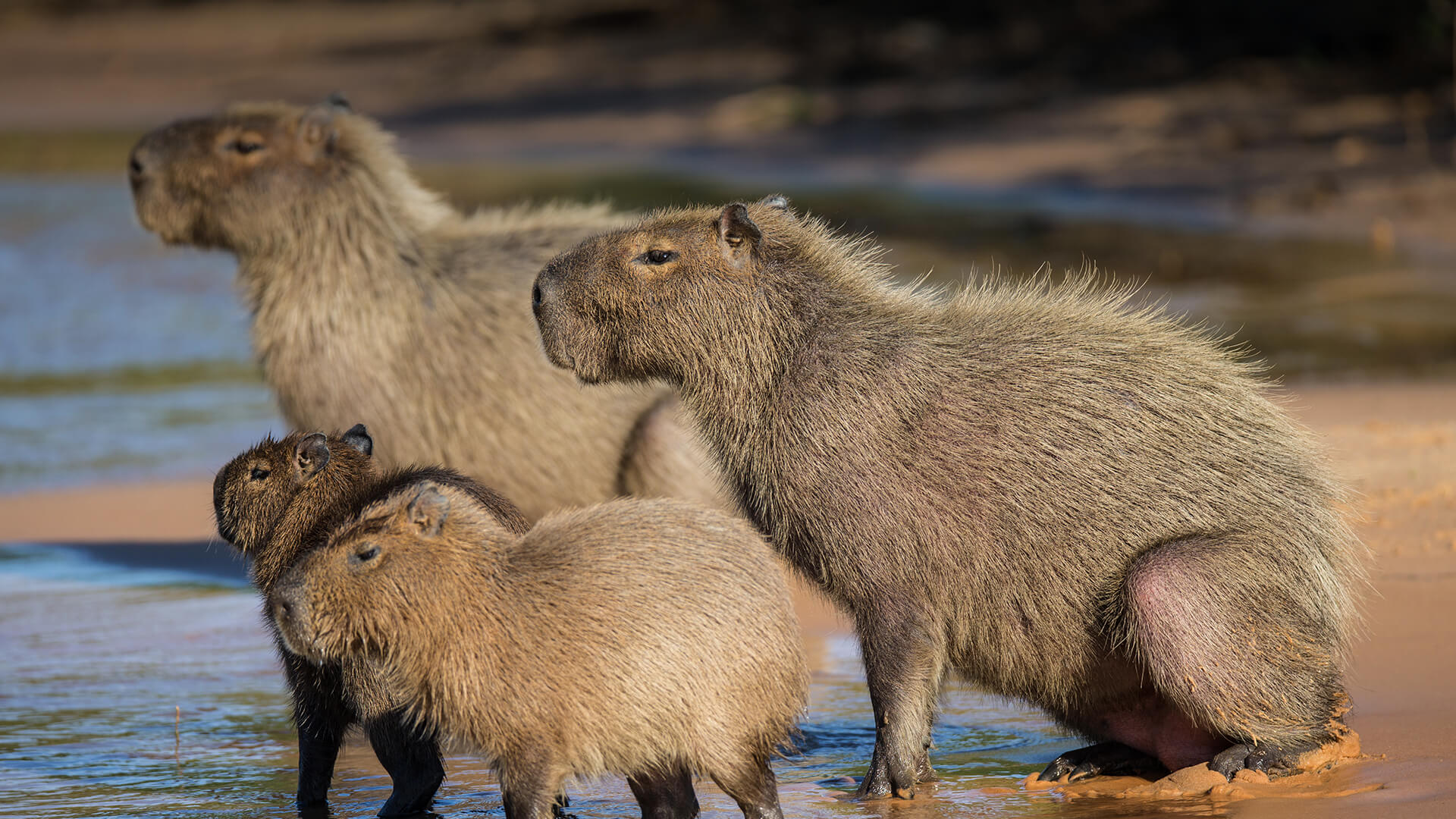
Jaguars: The Ultimate Capybara Nightmare
Let’s start with the big bad of the capybara world: the jaguar. These spotted powerhouses are like the Mike Tyson of the animal kingdom when it comes to hunting capybaras.
- Stealth Mode: Jaguars are masters of the sneak attack, using the thick vegetation near rivers to ambush unsuspecting capybaras.
- Jaw-dropping Strength: With a bite force that could crush a bowling ball, jaguars make quick work of even adult capybaras.
- Twilight Hunters: Both capybaras and jaguars are most active at dawn and dusk, making these times especially dangerous for our rodent friends.
Caimans: The Scaly Threat from Below
Now, imagine you’re a capybara, chilling by the water’s edge. Sounds nice, right? Well, not when there are caimans around. These reptilian predators are like nature’s version of those inflatable clowns that pop up when you least expect it.
- Ambush Experts: Caimans wait patiently in the water, barely visible, before striking with lightning speed.
- Shared Habitat: Living in the same watery environments means capybaras are always at risk of becoming caiman chow.
Anacondas: The Silent Stranglers
Green anacondas are like the ninjas of the capybara predator world. They’re silent, deadly, and can swallow a capybara whole. Yeah, you read that right.
- Constriction Kings: These snakes wrap around their prey, squeezing tighter with each exhale.
- Size Matters: A large female anaconda can take down and consume an adult capybara. Talk about a big meal!
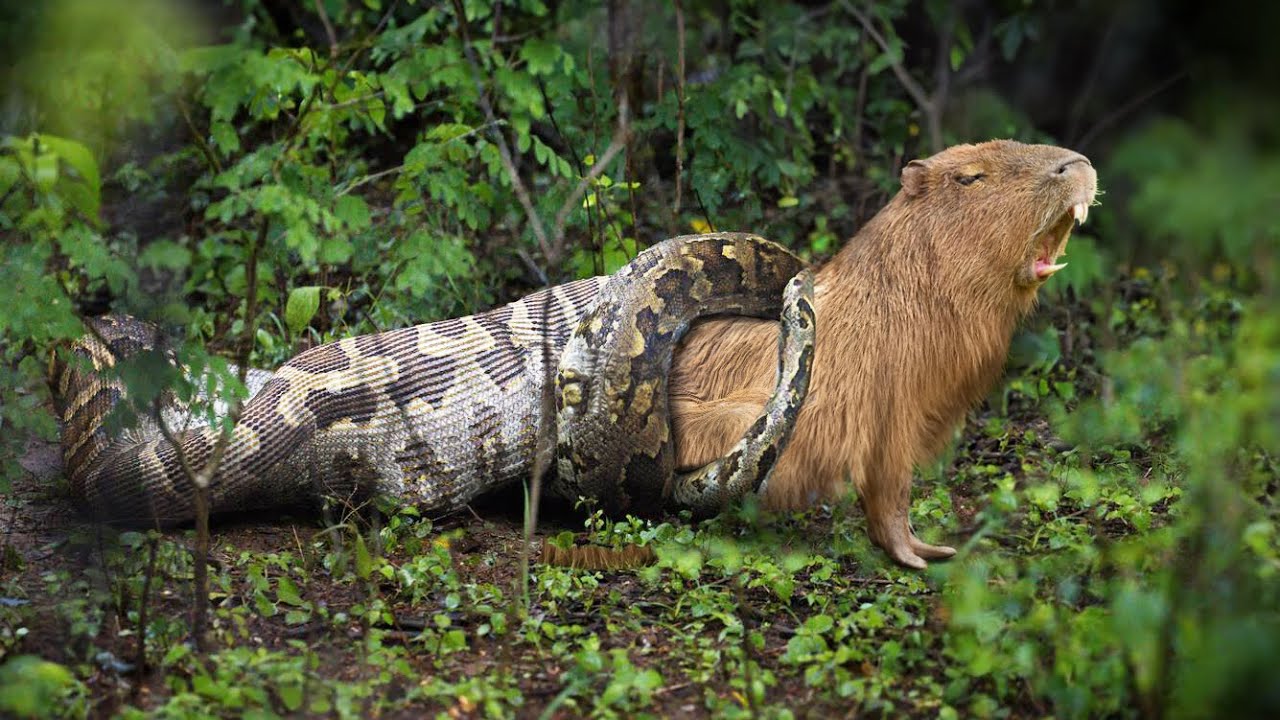
The Sky’s Not Safe Either: Aerial Threats
You’d think being the size of a small coffee table would keep you safe from birds, right? Wrong. Capybaras, especially the young ones, have to watch the skies too.
Harpy Eagles: Death from Above
Harpy eagles are the fighter jets of the bird world, and they’ve got capybaras in their crosshairs.
- Dive-bomb Attacks: These birds can reach speeds of over 50 mph when diving for prey.
- Talon Terror: With claws as big as grizzly bear claws, harpy eagles can crush a capybara’s skull in one strike.
The Unexpected Threats: Smaller but Deadly
It’s not just the big guys capybaras have to worry about. There’s a whole cast of smaller predators that can take down these rodents, especially when they’re young or isolated.
Ocelots: The Sneaky Cats
Ocelots might look like oversized house cats, but they’re skilled hunters with a taste for capybara.
- Jack of All Trades: These cats can climb and swim, making them a triple threat on land and in water.
- Ambush Tactics: Ocelots use their spotted coats to blend in, getting close before pouncing.
Crab-eating Foxes: Opportunistic Hunters
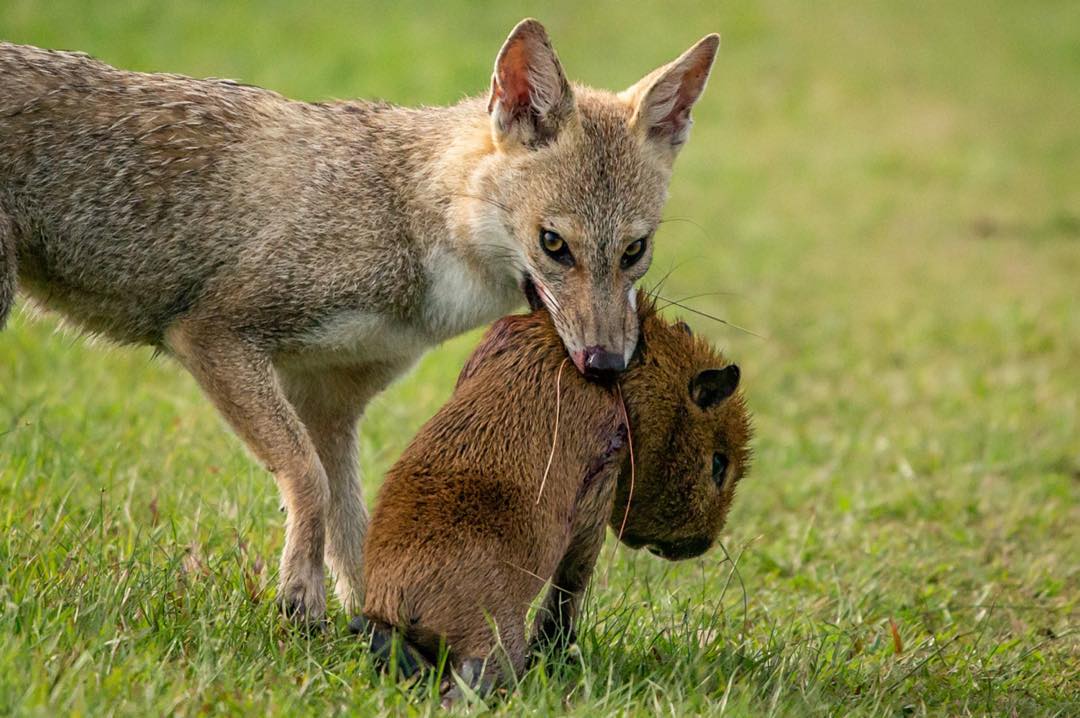
These foxes might not be able to take down an adult capybara, but they’re not above snagging a baby or two.
- Seasonal Threats: During dry seasons, when food is scarce, these foxes become more daring in their capybara hunts.
The Human Factor: Our Impact on Capybaras
Now, let’s talk about the elephant in the room – or should I say, the human. We’re the wildcard in the capybara predator lineup.
- Hunting: People hunt capybaras for their meat and leather, posing a significant threat to their populations.
- Habitat Loss: As we expand our cities and farms, we’re squeezing capybaras out of their natural homes.
How Capybaras Fight Back
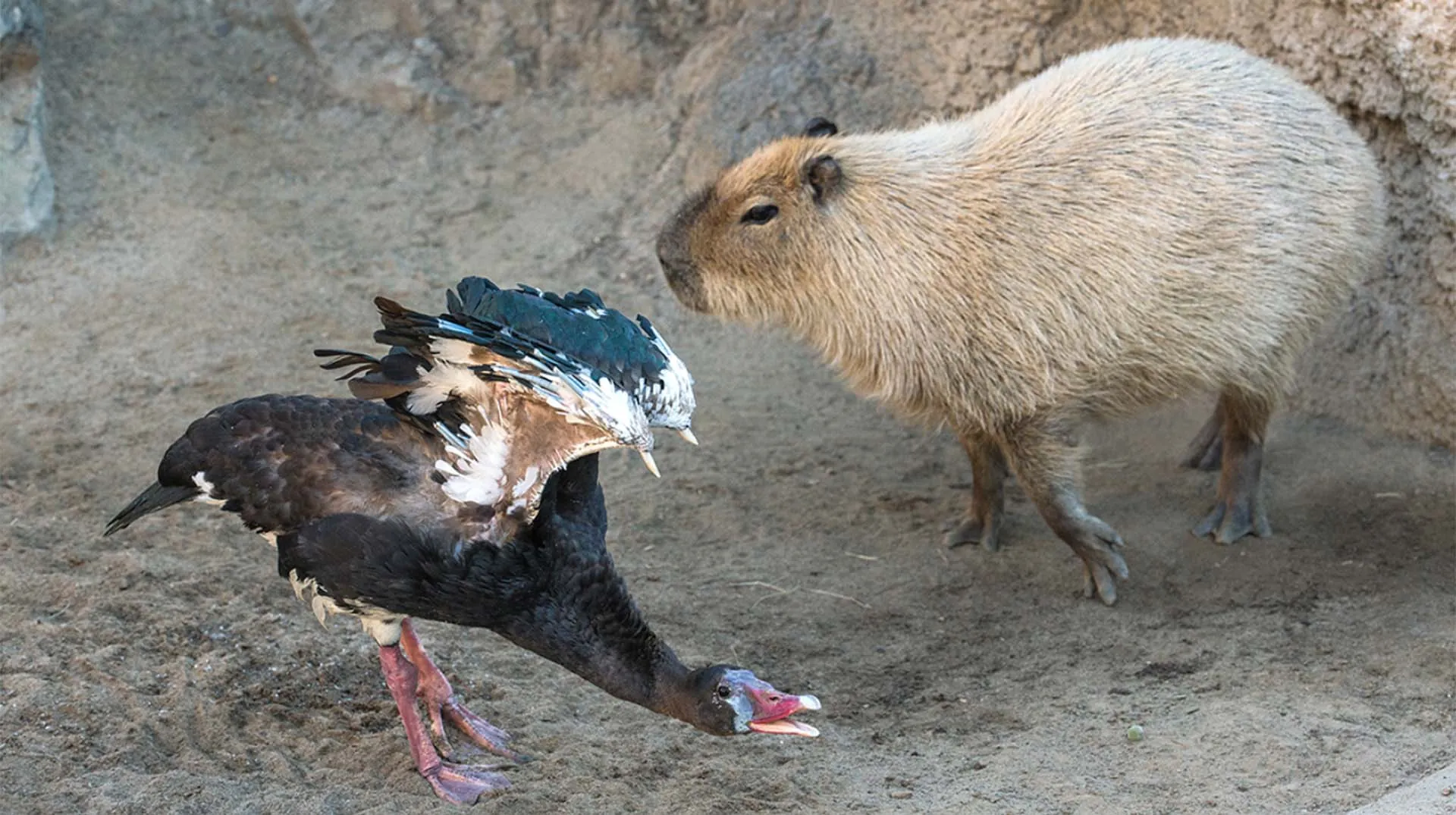
You might be thinking, “Geez, with all these predators, how do capybaras even survive?” Well, these rodents aren’t just sitting ducks. They’ve got some tricks up their furry sleeves.
Safety in Numbers
Capybaras are the ultimate squad goals. They live in groups of up to 40, making it harder for predators to single one out.
Aquatic Escape Artists
These rodents are surprisingly good swimmers. When danger strikes, they’ll dive into the water and can stay submerged for up to five minutes.
Always on Alert
Capybaras have a complex system of vocalizations to warn each other of danger. They’re like the neighborhood watch of the animal world.
FAQs: Your Burning Capybara Predator Questions Answered
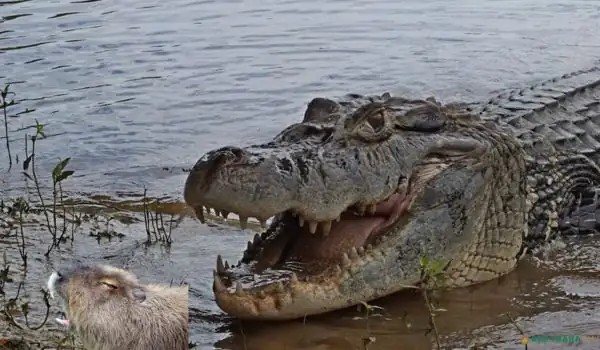
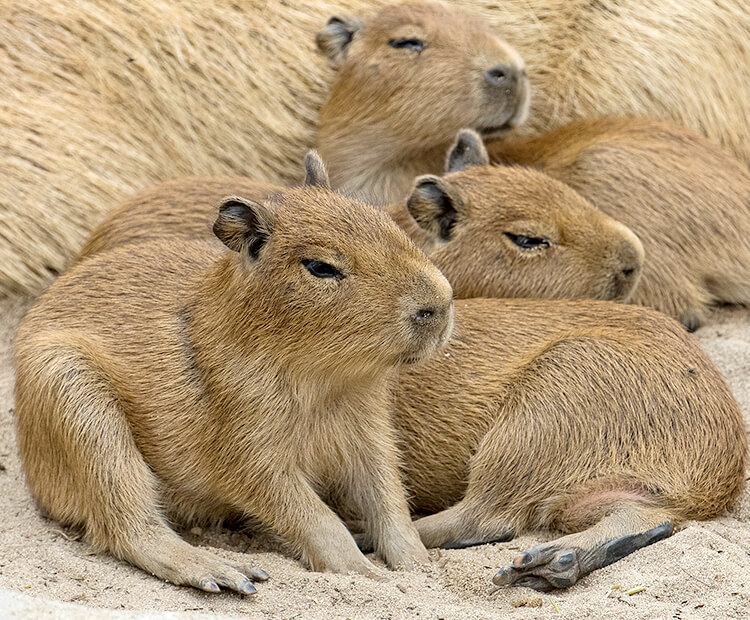
Q: Do lions or tigers eat capybaras?
A: Nope! Lions and tigers don’t naturally live in the same areas as capybaras. But if they did, you bet these big cats would be all over our rodent friends.
Q: How do capybaras protect themselves?
A: Capybaras rely on their group living, swimming skills, and constant vigilance. They’re also not afraid to use those sharp teeth if push comes to shove.
Q: Are capybaras endangered due to predation?
A: While predation is a natural part of their ecosystem, it’s actually human activities like hunting and habitat destruction that pose the biggest threat to capybara populations.
The Bottom Line on Capybara Predators
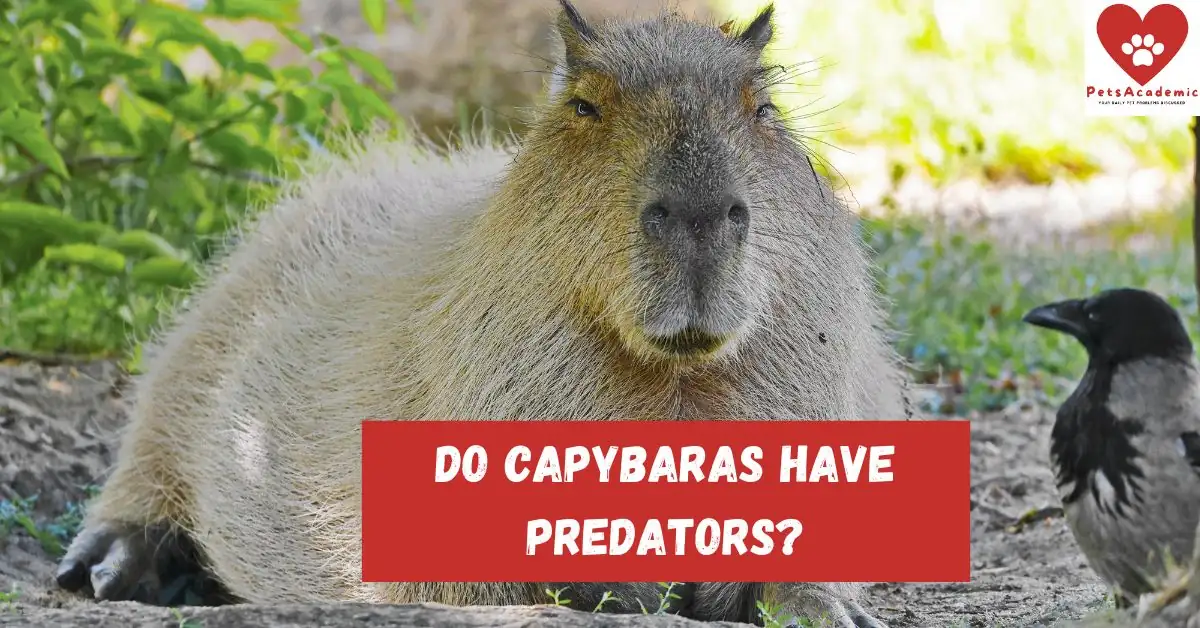
So there you have it, folks. The life of a capybara is no walk in the park. From jaguars to eagles, and everything in between, these oversized rodents have their work cut out for them just staying alive.
But here’s the kicker – despite all these threats, capybaras are still thriving in many areas. They’re resilient, adaptable, and, let’s face it, pretty darn cute. As we continue to learn more about these amazing animals and their predators, one thing’s for sure: the capybara’s story is far from over.
Remember, every time you see a capybara lounging by a pool or chilling with other animals in those viral videos, you’re looking at a survivor. These rodents have faced down some of nature’s fiercest predators and lived to tell the tale. And that, my friends, is what makes capybaras not just adorable, but downright impressive.
So next time you’re feeling overwhelmed, just think: if a capybara can face down a jaguar, you can probably handle that Monday morning meeting. Stay wild, stay curious, and keep rooting for the underdogs – or in this case, the under-rodents – of the animal kingdom.
